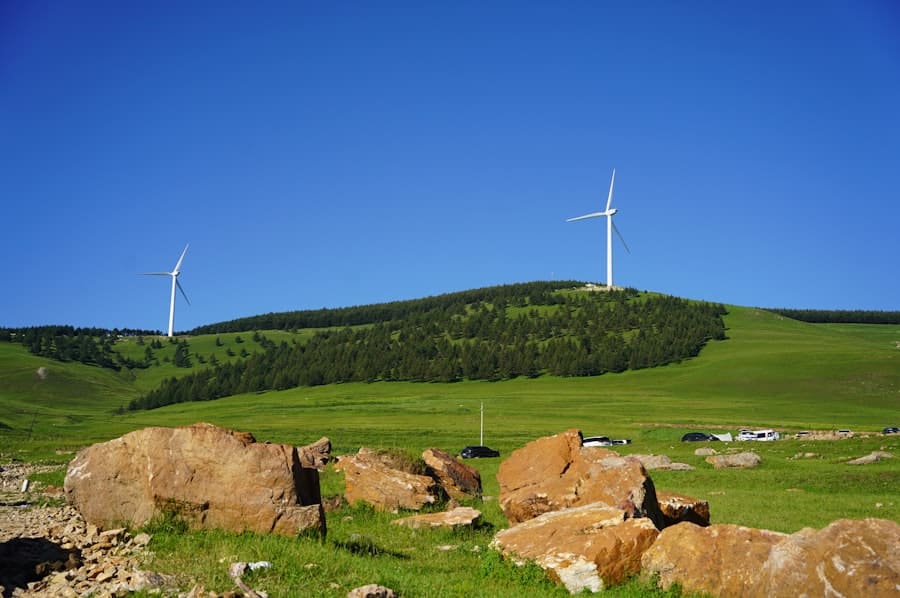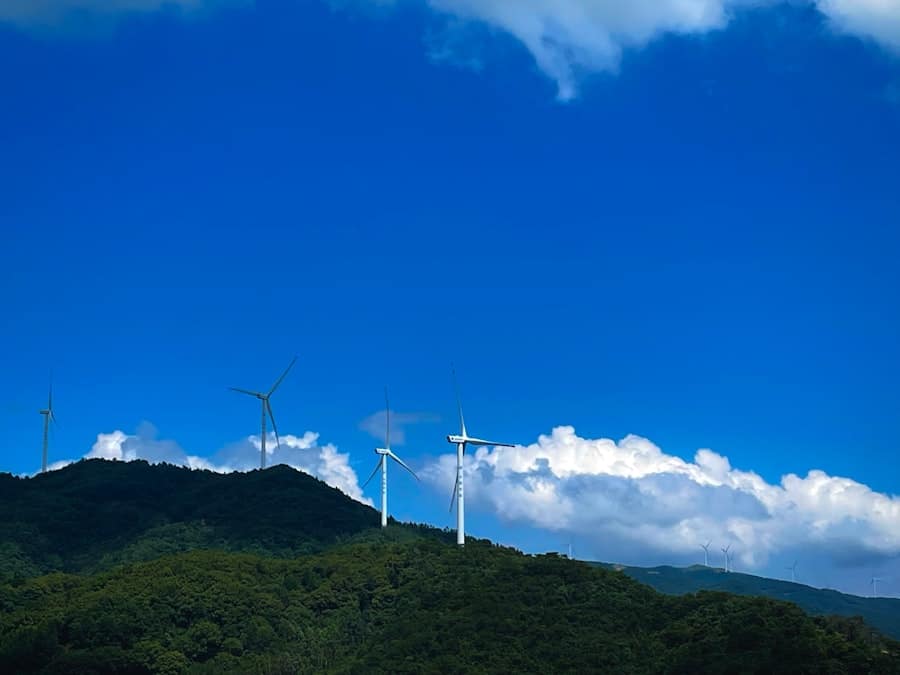The intersection of artificial intelligence (AI) and renewable energy has emerged as a pivotal area of research and application, particularly in the context of energy output prediction. As the world increasingly shifts towards sustainable energy sources such as solar, wind, and hydroelectric power, the ability to accurately forecast energy production becomes essential. AI technologies, with their capacity to analyze vast datasets and identify complex patterns, are revolutionizing how we approach energy forecasting.
By leveraging machine learning algorithms and data analytics, stakeholders in the renewable energy sector can enhance their operational efficiency, optimize resource allocation, and ultimately contribute to a more sustainable energy future. The integration of AI into renewable energy prediction is not merely a technological advancement; it represents a paradigm shift in how energy systems are managed. Traditional methods of forecasting often rely on historical data and simplistic models that may not account for the dynamic nature of weather patterns or the variability inherent in renewable energy sources.
In contrast, AI systems can process real-time data from multiple sources, including satellite imagery, weather forecasts, and historical performance metrics. This capability allows for more nuanced predictions that can adapt to changing conditions, thereby improving the reliability and stability of renewable energy supply.
Key Takeaways
- AI plays a crucial role in predicting renewable energy output by analyzing complex data and improving accuracy.
- Accurate renewable energy output prediction is essential for efficient energy management, grid stability, and cost reduction.
- AI technology is used in predicting renewable energy output through machine learning algorithms, data analytics, and weather forecasting models.
- Advantages of using AI in renewable energy prediction include improved accuracy, better resource allocation, and optimized energy production.
- Challenges and limitations of AI in renewable energy prediction include data quality, model complexity, and the need for continuous updates and maintenance.
The Importance of Accurate Renewable Energy Output Prediction
Accurate predictions of renewable energy output are crucial for several reasons. First and foremost, they enable grid operators to maintain balance between supply and demand. The intermittent nature of renewable sources like solar and wind means that their output can fluctuate significantly throughout the day or season.
If these fluctuations are not accurately predicted, it can lead to grid instability, blackouts, or the need for costly backup power sources. Therefore, precise forecasting is essential for ensuring that energy supply meets demand in real-time. Moreover, accurate predictions facilitate better financial planning for energy producers and investors.
Renewable energy projects often require substantial upfront investments, and their economic viability hinges on reliable revenue streams. By utilizing AI-driven forecasting models, companies can better anticipate their energy production levels, allowing them to make informed decisions regarding pricing strategies, maintenance schedules, and investment opportunities. This level of foresight not only enhances profitability but also encourages further investment in renewable technologies, thereby accelerating the transition to a low-carbon economy.
How AI Technology is Used in Predicting Renewable Energy Output
AI technology employs various methodologies to enhance the accuracy of renewable energy output predictions. One prominent approach is the use of machine learning algorithms that can learn from historical data to identify patterns and correlations that may not be immediately apparent through traditional analytical methods. For instance, supervised learning techniques can be trained on past weather data and corresponding energy output to create predictive models that forecast future production levels based on current conditions.
These models are capable of processing large volumes of data with multiple variables, such as temperature, humidity, wind speed, and solar irradiance. By analyzing these factors simultaneously, deep learning algorithms can generate highly accurate predictions that account for the complex interactions between different environmental variables.
Additionally, reinforcement learning techniques can be employed to optimize operational strategies in real-time based on ongoing performance feedback.
Advantages of Using AI in Renewable Energy Prediction
The advantages of employing AI in renewable energy prediction are manifold. One of the most significant benefits is the enhancement of predictive accuracy. Traditional forecasting methods often struggle with the inherent variability of renewable resources; however, AI algorithms can analyze vast datasets and learn from them to improve their predictions continuously.
This leads to more reliable forecasts that can adapt to changing conditions, ultimately resulting in better decision-making for grid operators and energy producers. Furthermore, AI-driven predictions can lead to cost savings across the renewable energy sector. By optimizing maintenance schedules based on predictive analytics, operators can reduce downtime and extend the lifespan of equipment.
For example, predictive maintenance powered by AI can identify potential failures before they occur, allowing for timely interventions that minimize operational disruptions.
Challenges and Limitations of AI in Renewable Energy Prediction
Despite its numerous advantages, the application of AI in renewable energy prediction is not without challenges. One significant limitation is the quality and availability of data. AI models require large amounts of high-quality data to function effectively; however, in many regions, especially those with emerging renewable markets, data may be sparse or inconsistent.
This lack of reliable data can hinder the development of robust predictive models and lead to inaccurate forecasts. Another challenge lies in the interpretability of AI models. While machine learning algorithms can produce highly accurate predictions, they often operate as “black boxes,” making it difficult for stakeholders to understand how decisions are made.
This lack of transparency can be problematic in regulatory environments where accountability is essential. Additionally, overfitting—where a model performs well on training data but poorly on unseen data—can also pose a risk if not properly managed during model development.
Case Studies of Successful AI Applications in Renewable Energy Prediction
Several case studies illustrate the successful application of AI in predicting renewable energy output across different contexts. One notable example is Google’s DeepMind collaboration with the UK-based wind farm operator Ørsted. By utilizing machine learning algorithms to analyze historical weather data alongside operational performance metrics from wind turbines, DeepMind was able to improve wind power forecasting accuracy by up to 30%.
This enhancement allowed Ørsted to optimize its energy trading strategies and better integrate wind power into the national grid. Another compelling case is that of Enel Green Power, an Italian multinational company specializing in renewable energy generation. Enel has implemented AI-driven predictive analytics across its solar and wind farms worldwide.
By leveraging advanced machine learning techniques to analyze weather forecasts and historical production data, Enel has significantly improved its ability to predict energy output. This capability has enabled the company to enhance its operational efficiency and reduce costs associated with energy imbalance penalties.
Future Trends and Developments in AI for Renewable Energy Prediction
Looking ahead, several trends are likely to shape the future landscape of AI applications in renewable energy prediction. One emerging trend is the increasing integration of Internet of Things (IoT) devices within renewable energy systems. IoT sensors can provide real-time data on environmental conditions and equipment performance, which can be fed into AI models for more accurate predictions.
This convergence of IoT and AI will enable more granular monitoring and control over renewable energy assets. Additionally, advancements in explainable AI (XAI) are expected to address some of the interpretability challenges currently faced by stakeholders. As researchers develop methods to make AI models more transparent and understandable, it will become easier for operators and regulators to trust and utilize these technologies effectively.
Furthermore, as climate change continues to impact weather patterns globally, adaptive AI systems that can learn from new data will become increasingly important for maintaining reliable energy forecasts.
The Potential Impact of AI on the Renewable Energy Industry
The potential impact of AI on the renewable energy industry is profound and far-reaching. As technologies continue to evolve and improve, the ability to predict renewable energy output with high accuracy will play a critical role in facilitating the transition towards a sustainable energy future. By harnessing the power of AI, stakeholders can optimize operations, enhance grid stability, and drive down costs associated with renewable energy generation.
In an era where climate change poses significant challenges to global energy systems, the integration of AI into renewable energy prediction represents a beacon of hope for achieving a more resilient and sustainable future. As we continue to explore innovative applications of AI within this sector, it is clear that these technologies will be instrumental in shaping a cleaner and more efficient energy landscape for generations to come.
In a recent article on enicomp.com, the importance of choosing the right smartphone for your girlfriend is discussed in detail. The article provides valuable insights and tips on how to select the perfect device that suits her needs and preferences. This article can be a helpful resource for those looking to make a thoughtful and practical gift for their loved ones. To read more about this topic, click here.
FAQs
What is the role of AI in predicting renewable energy output?
AI plays a crucial role in predicting renewable energy output by analyzing large amounts of data from various sources such as weather patterns, historical energy production, and environmental factors to make accurate predictions.
How does AI improve the accuracy of renewable energy output predictions?
AI algorithms can process and analyze complex data sets to identify patterns and trends that may not be apparent to human analysts. This allows for more accurate and reliable predictions of renewable energy output.
What are the benefits of using AI for predicting renewable energy output?
Using AI for predicting renewable energy output can lead to more efficient energy production, better resource management, and improved grid stability. It can also help in reducing costs and optimizing the use of renewable energy sources.
What are some AI techniques used for predicting renewable energy output?
AI techniques such as machine learning, neural networks, and predictive modeling are commonly used for predicting renewable energy output. These techniques can analyze historical data and real-time information to make accurate predictions.
How does AI contribute to the integration of renewable energy into the power grid?
AI can help in integrating renewable energy into the power grid by providing accurate predictions of energy output, which allows for better planning and management of energy resources. This can help in reducing the reliance on traditional energy sources and promoting the use of renewable energy.



